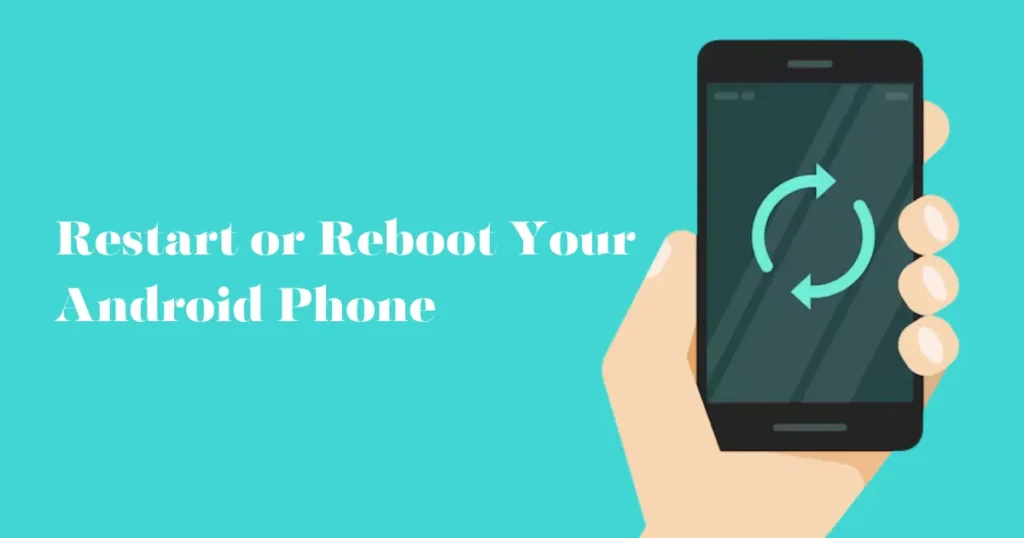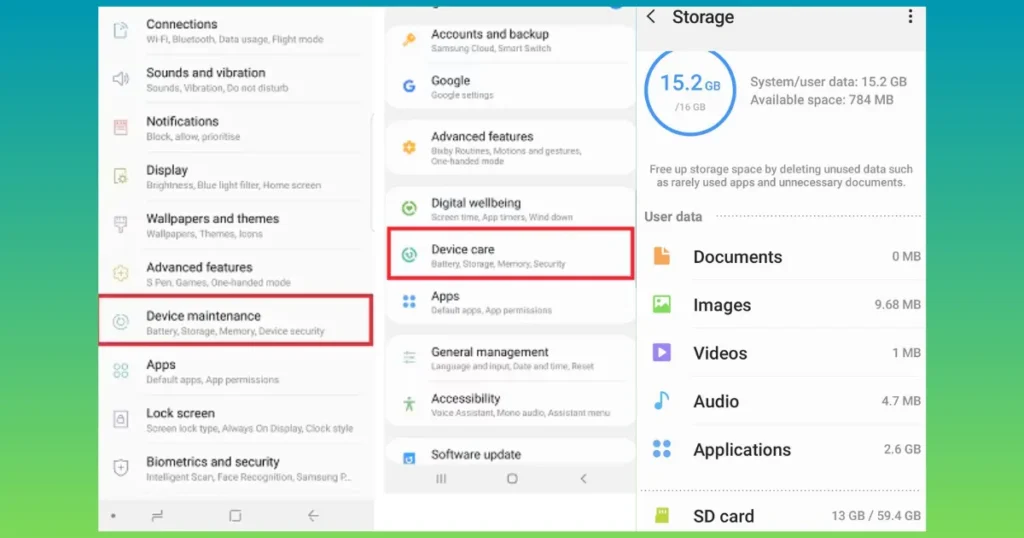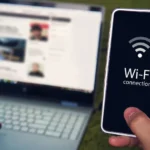Android Camera Failed: Step-by-Step Troubleshooting Guide
Description

Facing the Android camera failed issue is a common headache for many Android users.
From the frustrating failed to open camera Android message to the bewildering android camera failed to initialize, these problems can severely hinder the functionality of your device’s camera.
Whether it’s a persistent failed to connect camera service Android alert or the specific Samsung Android camera failed error, the underlying causes vary widely, yet the inconvenience is universally felt among users.
This article aims to tackle the myriad of issues that lead to the dreaded why does my android say camera failed question, including solutions for the android warning camera failed notification and fixes for when the camera keeps stopping Samsung.
From troubleshooting steps like clearing the camera app’s cache and data, to more drastic measures like performing a factory reset, we’ll guide you through a comprehensive step-by-step troubleshooting guide designed to address the common query: why is my camera not working on my android phone?
Table of Contents
Android Camera Failed: Step-by-Step Troubleshooting Guide
01. Restart Your Android Phone

Standard and Alternative Restart Methods
- Use the Power Button:
- Press and hold the power button for a few seconds until the power off menu appears.
- If available, select the “Restart” option. This method helps in resolving minor glitches causing the “Android camera failed” issue.
- Power + Volume Up:
- For devices like the latest Pixel phones, press the “Power” and “Volume Up” buttons simultaneously to access the power menu.
- This can be particularly useful if the standard power button method does not work.
- Hard Reboot:
- If the device is unresponsive and the power menu does not appear, hold down the power button for 10-20 seconds until the device restarts.
- Alternatively, press and hold both the “Power” and “Volume Up” buttons for up to 20 seconds.
- Remove the Battery (if applicable):
- For devices with a removable battery, power down the device, remove the battery, wait a few seconds, then reinsert and power on the device.
- This method can effectively reset the hardware and clear temporary software issues.
- Closing Apps Instead of Rebooting:
- Access the list of recently used apps by swiping up or tapping the square at the bottom right of the screen.
- Close individual apps by swiping them up or use “Close All” to shut all running applications. This can free up memory and potentially resolve the “Android camera failed” error without needing a restart.
Additional Troubleshooting Steps
- If the “Android camera failed” error persists, consider uninstalling recently installed apps, reducing screen brightness, checking the battery health, and ensuring that all system apps are enabled.
- These steps can address underlying issues that may cause the camera to malfunction.
By following these steps, users can effectively tackle the “Android camera failed” issue through various restarting methods and additional troubleshooting steps.
02. Update Your Android Operating System and Camera App

Step-by-Step Guide for Updating Android OS and Camera App
- Check for System Updates:
- Navigate to
Settings > System > System update. - If an update is available, follow the prompts to download and install the latest Android OS version. This can resolve many issues related to the “Android camera failed” error.
- Navigate to
- Update Your Camera App:
- Open the Google Play Store and tap on the profile icon at the top right.
- Select
My apps & games, find the camera app, and tapUpdateif available. - Regular updates can fix bugs that may cause the “Android camera failed” message.
- Set Apps to Auto-Update:
- In the Google Play Store, tap the profile icon, then go to
Settings > Network Preferences > Auto-update apps. - Choose
Over Wi-Fi onlyto save data orOver any networkto update apps anytime. - Ensuring apps are up-to-date can prevent issues from outdated software interfering with camera functionality.
- In the Google Play Store, tap the profile icon, then go to
- Benefits of Updating Android OS:
- New Android versions, like Android 12, offer enhanced privacy features such as Mic & Camera indicators, Approximate location permissions, and a Privacy dashboard.
- Updates can improve overall device performance and stability, reducing the chances of the “Android camera failed” error.
- Using Custom ROMs:
- For advanced users with older devices not supported by official updates, installing a custom ROM can be a solution.
- Custom ROMs provide access to the latest Android features and updates, potentially resolving camera issues.
Updating your Android operating system and camera app not only addresses bugs but also enhances the security and functionality of your device, which can significantly reduce the occurrence of errors like “Android camera failed”.
03. Check and Adjust Camera App Permissions
Step-by-Step Guide to Manage Camera App Permissions
- Accessing App Permissions:
- Navigate to
Settingson your Android device. - Tap on
Appsand select the specific app you wish to manage, such as the Camera app. - Click on
Permissionsto view all the permissions required by the app.
- Navigate to
- Adjusting Permissions:
- In the Permissions menu, you will see various permissions like Camera, Microphone, and Location.
- Tap on each permission to toggle it on or off. Consider allowing permissions only while the app is in use to enhance security.
- Bulk Permission Management:
- For a broader control, go back to the Settings menu and select
Security & privacy. - Choose
Privacyfollowed byPermission managerto see a comprehensive list of all permissions and the apps associated with them. - This section allows you to manage permissions for multiple apps simultaneously.
- For a broader control, go back to the Settings menu and select
- Monitoring Real-Time Access:
- On devices with Android 12 or higher, monitor real-time access through icons in the status bar when an app uses the camera or microphone.
- This feature adds an extra layer of transparency and control.
- Global Toggles for Camera and Microphone:
- For enhanced privacy, Android 12 and above offer global toggles to disable camera and microphone access across all apps.
- Navigate to
Settings, selectPrivacy, and use the global toggle switches to enable or disable access.
- Permission Review Before App Installation:
- Before downloading an app, review the permissions it will request by visiting the app’s page on the Google Play Store.
- Scroll to
Data safetyto understand the data the app will access.
By regularly checking and managing app permissions, Android users can significantly enhance the security and functionality of their devices, potentially reducing issues related to “Android camera failed.” This proactive approach helps maintain privacy while ensuring apps function as intended without unnecessary access to sensitive components.
04. Clear Camera App Cache and Data
Step-by-Step Guide to Clearing Camera App Cache and Data
- Accessing App Settings:
- Open the ‘Settings’ app on your Android device.
- Scroll down and tap on ‘Apps’ or ‘Application Manager’ depending on your device.
- Locating the Camera App:
- In the list of apps, find and tap on the ‘Camera’ app. You might need to view all apps if it’s not immediately visible.
- Clearing Cache:
- Once in the Camera app settings, find the ‘Storage’ option and tap on it.
- Here, you will see two options: ‘Clear Data’ and ‘Clear Cache’.
- Tap on ‘Clear Cache’ to remove temporary files that could be causing the Android camera failed issue.
- Clearing All Data:
- If clearing the cache does not resolve the issue, return to the Storage menu.
- Tap ‘Clear Data’. This will reset the Camera app to its original state, removing all data including settings and accounts.
- Reboot Your Device:
- After clearing the cache and data, reboot your device to ensure changes take effect and the Android camera failed issue is potentially resolved.
Additional Tips
- Regular Maintenance: Regularly clearing the cache of various apps can prevent storage clogs and maintain device performance.
- Backup Important Data: Before clearing app data, ensure any important photos or settings are backed up, as this process will erase them.
- Check for Updates: After clearing the cache and data, check if there are updates available for your Camera app, as updates may also fix bugs causing the Android camera failed error.
By following these steps, you can help address issues related to the Android camera failed error, potentially enhancing your device’s camera functionality and overall performance. Clearing the cache and data helps in troubleshooting common problems, ensuring your camera operates smoothly.
05. Free Up Storage Space on Your Device

Step-by-Step Guide to Freeing Up Storage Space
- Check Storage Usage:
- Navigate to
Settings > Storageon your Android device to see how much storage is being used and what is using it.
- Navigate to
- Delete Unneeded Apps:
- Uninstall apps that you no longer use by going to
Settings > Apps. This can significantly free up space, especially with larger apps.
- Uninstall apps that you no longer use by going to
- Clear App Cache and Data:
- For apps you use, but take up a lot of space, clear cache and data via
Settings > Apps > [App Name] > Storage > Clear Cache/Clear Data.
- For apps you use, but take up a lot of space, clear cache and data via
- Manage Photos and Videos:
- Use Google Photos to back up images and videos, then delete them from your device storage. Enable Smart Storage on Google Photos to automatically manage this if your device storage is low.
- Remove Downloaded Media Files:
- Delete downloaded movies, music, and other media files that are no longer needed. Check apps like Google Play Movies and Spotify.
- Transfer Files to External Storage:
- Move files to an SD card or external hard drive. Connect your device to a computer to transfer files quickly.
- Use Cloud Services:
- Utilize cloud storage services like Google Drive, OneDrive, or Dropbox to store files you don’t need to access frequently.
- Delete Old Messages:
- Remove old text messages, especially those with attachments, to free up more space.
- Clean Up Downloads Folder:
- Regularly clear out the Downloads folder via
Files > Downloadson your device.
- Regularly clear out the Downloads folder via
- Limit Video Resolution:
- Lower the default camera resolution for photos and videos to save space on future files.
By following these steps, you can effectively manage and free up storage on your Android device, potentially resolving issues like the Android camera failed error due to insufficient storage space. Regular maintenance of your device’s storage can enhance overall performance and prevent storage-related problems.
06. Perform a Factory Reset (As a Last Resort)
Preparing for a Factory Reset
Before proceeding with a factory reset, it’s crucial to back up all crucial data. This includes contacts, photos, videos, and other personal files. Use Google Drive or another cloud service for backup, ensuring you can restore your information post-reset.
- Backup Important Data:
- Navigate to
Settings > System > Backupand ensure your Google account is linked. - Turn on the backup option to save your data to Google Drive.
- Navigate to
- Unpair Bluetooth Devices and Sign Out:
- Disconnect all paired devices and log out from accounts to prevent issues post-reset.
- Remove SIM and SD Cards:
- Safely eject SIM and SD cards to protect your personal information.
Performing the Factory Reset
Resetting your device can solve persistent software issues or prepare it for a new owner. Follow these steps carefully to ensure a smooth reset process.
- Access the Reset Menu:
- Go to
Settings > System > Reset Options. - Select
Erase all data (factory reset).
- Go to
- Confirm the Reset:
- You’ll need to enter your device’s PIN or password to proceed.
- Review the final warning then select ‘Reset Phone’ to begin the process.
- Reboot and Restore:
- Once the reset is complete, your device will restart.
- Log in with your Google account and restore your backed-up data.
Factory Reset Through Recovery Mode
If your device is unresponsive, use the recovery mode to perform a factory reset.
- Enter Recovery Mode:
- Turn off your device.
- Press and hold the Power and Volume Up buttons simultaneously until the recovery mode menu appears.
- Navigate to Factory Reset:
- Use the volume buttons to scroll to ‘Wipe data/factory reset’.
- Press the Power button to select.
- Confirm the Reset:
- Select ‘Yes’ to confirm and start the reset process.
- Once completed, choose ‘Reboot system now’ to restart your device.
Performing a factory reset should be your last resort due to its comprehensive nature in clearing data. It effectively addresses severe software issues, but always ensure you have a complete backup before proceeding.
FAQs
Q: What steps should I take to resolve the “camera failed” issue on my Android device?
To fix a malfunctioning Android camera, try the following steps:
- Exit the camera app and then reopen it.
- Ensure the camera is enabled in your device’s settings.
- Update the camera app to the latest version.
- Close any other applications that might be using the camera.
- Restart your device to refresh its memory.
- Verify that the camera app has the necessary permissions to operate.
- Clear the camera app’s cache to remove any temporary files that could be causing issues.
- If all else fails, uninstall and then reinstall the camera app.
Q: How can I troubleshoot my Android camera if it’s not working properly?
To troubleshoot your Android camera, follow these steps:
- Close any apps running in the background that could be interfering with the camera.
- Update the camera app to the most recent version by checking for updates in your device’s app store.
Q: What should I do if my Android camera is broken?
If your Android camera seems broken, you can try these solutions:
- Restart your phone to clear any temporary glitches.
- Ensure your phone has sufficient battery charge.
- If your phone is overheating, let it cool down before using the camera.
- Force stop the camera app to reset its state.
- Clear the camera’s cache memory to eliminate any corrupted data.
- Check that there is enough storage space on your device for the camera to function correctly.
- Update your device’s software to the latest version to fix any known bugs.
- Review the app permissions to make sure the camera app is allowed to access the necessary hardware.
Q: What is the method for resetting my Android camera to its default settings?
To reset your Android camera to its default settings, you typically need to clear the camera app’s data. This can usually be done through the settings menu under ‘Apps’ or ‘Application Manager,’ where you can find the camera app and select ‘Clear Data’ or ‘Clear Cache’. However, the exact steps may vary depending on your device and the version of the Android operating system it’s running.
Conclusion
Navigating through the multifaceted issue of “Android camera failed” requires a methodical approach, as discussed in our comprehensive guide. By systematically addressing the problem through a series of structured steps, from restarting your device to updating software and managing app permissions.
We aim to mitigate the inconveniences caused by camera malfunctions. Hence, reinforcing the troubleshooting methods, such as clearing cache and data or even as a last resort, performing a factory reset, illustrates our commitment to ensuring your Android camera operates seamlessly.
This recapitulation of strategies underscores our endeavor to equip you with practical solutions for overcoming the “Android camera failed” dilemma, enhancing your overall device experience.
Reflecting on the broader implications, understanding and applying these troubleshooting techniques not only alleviates the immediate frustration of a non-functional camera but also deepens users’ knowledge of their Android devices.
Furthermore, it evokes a proactive mindset towards technology management, emphasizing the significance of regular maintenance and updates in preventing similar issues. As readers implement these solutions, they contribute to a more informed and technology-savvy community, prepared to tackle the “Android camera failed” challenge head-on.
The guidance provided here serves not just as a fix but as a stepping stone towards greater digital empowerment and resilience in the face of tech adversities.














